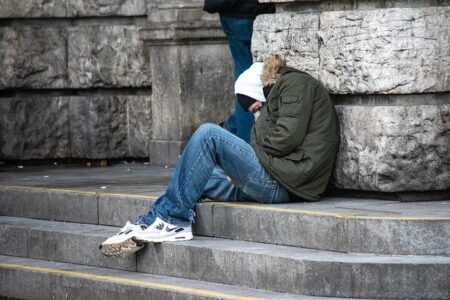In a chilling testament to the perilous nature of professional cycling, Thibault Guernalec, a rising star in the sport, expressed deep concern following a harrowing incident during training. After being struck by a car, the 27-year-old rider confronted the unsettling reality of memory loss, stating, “What scares me is that I don’t remember anything.” As the cycling community rallies around him, Guernalec’s experience raises critical questions about rider safety and the risks inherent in training on public roads. With more accidents occurring in recent years, the need for increased awareness and protective measures has never been more pressing. This incident serves as a stark reminder of the vulnerabilities athletes face and the imperative to safeguard their well-being in the pursuit of excellence.
Thibault Guernalec’s Frightening Memory Loss: Understanding the Impact of Traumatic Brain Injuries
Thibault Guernalec’s experience following a traumatic brain injury serves as a poignant reminder of the severe consequences that can result from seemingly everyday situations. After being struck by a vehicle during a training session, Guernalec’s profound realizations about memory loss have reverberated far beyond the cycling community. “What scares me is that I don’t remember anything,” he stated, reflecting not just on his personal loss but on the often-overlooked implications of brain injuries. As he navigates through the uncertainty of his condition, the ripple effect on his mental health and competitive spirit is undeniable.
The aftermath of such injuries increases awareness about the importance of proper training and safety protocols in sports. Key takeaways from Guernalec’s situation include:
- Impact on Mental Health: Traumatic brain injuries can lead to anxiety, depression, and other psychological issues.
- Long-Term Consequences: Memory loss may extend beyond the immediate aftermath, affecting daily life and career.
- Need for Awareness: Athletes and coaches must prioritize safety measures to prevent similar incidents.
In light of Guernalec’s experience, it’s crucial to foster discussions around brain injuries in sports. The journey to recovery is not only physical but deeply interwoven with the athlete’s mental resilience and social support systems. Recognizing and addressing these challenges can pave the way for a safer environment for all athletes, reminding us of the ongoing need for vigilance and education in sports safety.
Insights into Recovery: Experts Weigh In on Rehabilitation for Athletes After Head Injuries
In the wake of Thibault Guernalec’s serious accident, significant discussions have emerged around the complexities of rehabilitation for athletes who have sustained head injuries. Experts emphasize that the journey towards recovery is multifaceted, involving not only physical healing but also mental and emotional support. Many rehabilitation programs are now adopting a more comprehensive approach, which includes:
- Cognitive Rehabilitation: Tailored exercises to restore cognitive functions damaged by injuries.
- Physical Therapy: Structured regimens aimed at regaining strength, balance, and coordination.
- Psychological Support: Counseling and mental health strategies to address trauma and anxiety stemming from the accident.
Medical professionals are advocating for a gradual reintroduction into sports, stressing the importance of monitoring symptoms and reactions. This method not only aids in physical recovery but also reassures athletes like Guernalec that their well-being is prioritized. Key components of effective recovery practices include:
| Recovery Component | Description |
|---|---|
| Neurological Assessments | Regular evaluations to assess brain function and recovery progress. |
| Education on Risks | Informing athletes about the long-term implications of head injuries. |
| Peer Support Programs | Creating networks for athletes to share experiences and coping strategies. |
Preventive Measures for Cyclists: How Training and Awareness Can Reduce the Risk of Accidents
In light of Thibault Guernalec’s harrowing encounter with a car while training, it’s crucial for cyclists to prioritize a set of preventive measures aimed at enhancing safety on the road. Awareness and education about surrounding traffic conditions can empower cyclists to make informed decisions. Here are essential strategies to adopt:
- Defensive Riding: Always assume that other drivers may not see you.
- Visibility Gear: Wear bright or reflective clothing to increase your presence.
- Signals and Communication: Use hand signals to communicate your intentions to drivers.
- Regular Training: Participate in riding courses focused on road safety and accident prevention.
Moreover, joining local cycling groups can provide valuable experience and knowledge sharing. Regular group rides can foster a supportive environment where cyclists can learn from more experienced peers about navigating traffic safely. Traffic laws specific to cycling should also be ingrained in every cyclist’s routine. An emphasis on understanding the local regulations can further minimize risks. Stakeholders, including city planners and health officials, are encouraged to create safer infrastructures for cyclists. The following table summarizes critical training elements:
| Training Element | Description |
|---|---|
| Handling Skills | Practice maneuvers to handle unexpected situations on the road. |
| Road Awareness | Learn to scan your environment and anticipate potential hazards. |
| Emergency Procedures | Know what to do in the event of an accident or near-miss. |
Wrapping Up
In the wake of a harrowing incident that left professional cyclist Thibault Guernalec grappling with memory loss after being struck by a vehicle during training, the cycling community pauses in reflection on the inherent dangers faced by athletes. Guernalec’s candid acknowledgment of his fears and uncertainties underscores the need for increased awareness around road safety for cyclists and other vulnerable road users. As investigations continue and support pours in from fans and fellow cyclists alike, Guernalec’s road to recovery will not only test his physical resilience but also his mental fortitude. As the industry rallies for stricter safety measures, his experience serves as a sobering reminder of the perils that can impact even the most dedicated professionals. The hope remains that his story will inspire change and foster a safer environment for all cyclists on the road.











